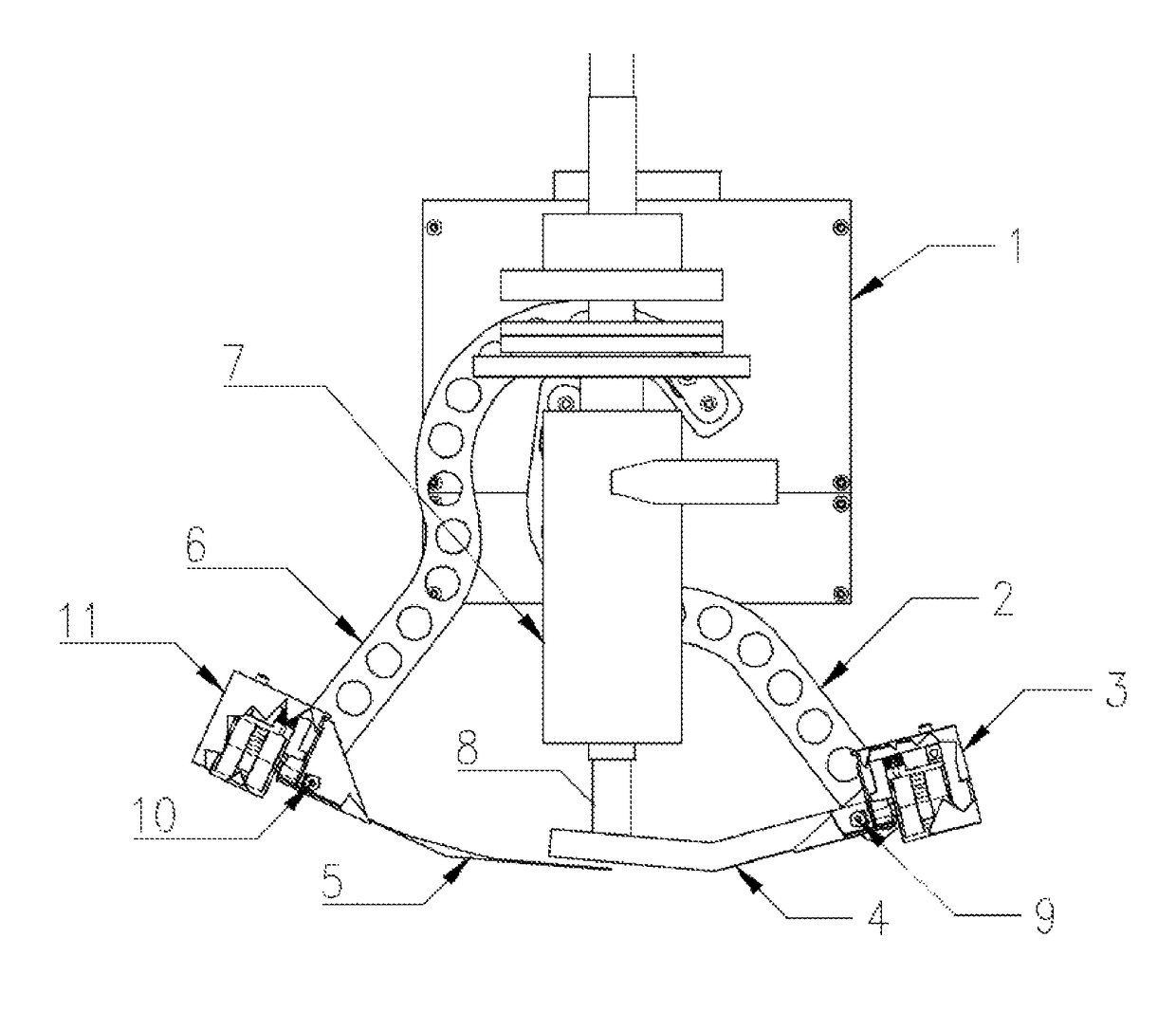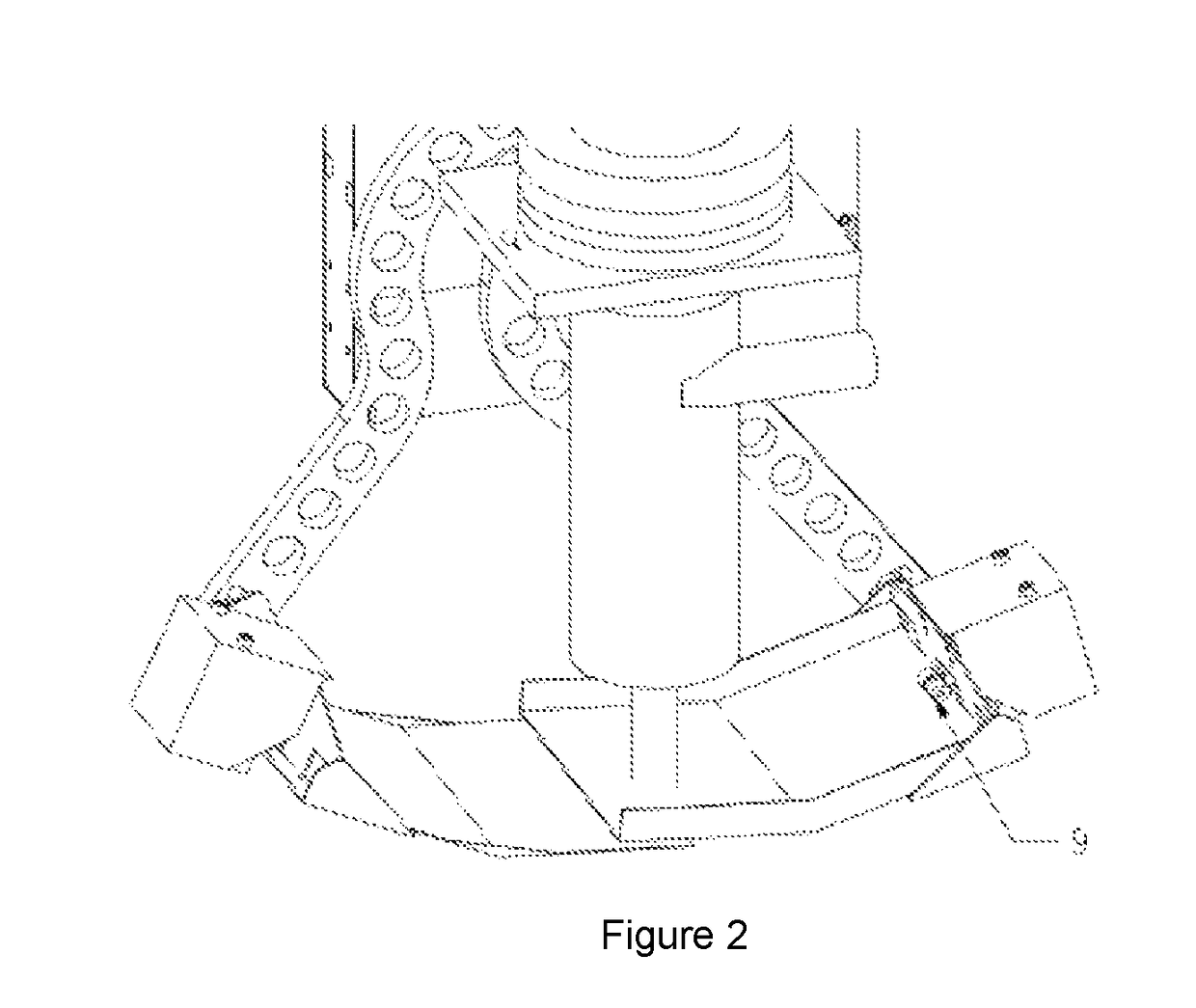Auto catch apparatus and method of use in making chemical mechanical polishing pads
a technology of automatic catch and polishing pad, which is applied in the direction of grinding device, manufacturing tool, other domestic articles, etc., can solve the problems of exposing the user to splash and vapor hazards, reducing yield and raw material waste, and avoiding defects or outright loss of the entire cake
- Summary
- Abstract
- Description
- Claims
- Application Information
AI Technical Summary
Benefits of technology
Problems solved by technology
Method used
Image
Examples
Embodiment Construction
[0080]Molding trials were conducted with a continuous process of the present invention using a microsphere polymer filled one component polyurethane mixed and poured into a round cake shaped mold via a vertically disposed dispenser unit. Each of Example 1 (Inventive) and Comparative Example 2 were continued for a total of 5 molds (cakes).
[0081]In Example 1, the apparatus of the present invention as shown in FIG. 1 was used, with a live person inserting a 3.785 L bucket under the dispenser unit to catch the set of two plates, a catch plate and a sling plate, and the microsphere polymer filled polyurethane poured after each mold is full and before pouring into next mold can begin. Also, in Example 1, the apparatus was affixed to an automated Z axis ball screw raising and lowering the dispenser unit and the actuator unit in an out of the molds.
[0082]In Comparative Example 2, the dispenser unit and the actuator unit was moved by a robot with all axes in a fixed position to enable draina...
PUM
| Property | Measurement | Unit |
|---|---|---|
| height | aaaaa | aaaaa |
| height | aaaaa | aaaaa |
| density | aaaaa | aaaaa |
Abstract
Description
Claims
Application Information
 Login to View More
Login to View More - R&D
- Intellectual Property
- Life Sciences
- Materials
- Tech Scout
- Unparalleled Data Quality
- Higher Quality Content
- 60% Fewer Hallucinations
Browse by: Latest US Patents, China's latest patents, Technical Efficacy Thesaurus, Application Domain, Technology Topic, Popular Technical Reports.
© 2025 PatSnap. All rights reserved.Legal|Privacy policy|Modern Slavery Act Transparency Statement|Sitemap|About US| Contact US: help@patsnap.com



